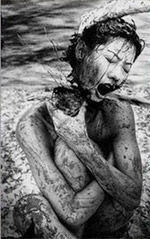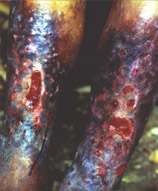The Second Sino-Japanese War began on September 18, 1931 when Japan invaded China’s Manchuria and took control of the Northeastern part of China. The war then escalated into a full-blown war on July 7, 1937 when the Japanese troops crossed the Marco Polo Bridge and invaded Peking (today’s Beijing). This was followed by eight years of terror when the people in China and other countries in Asia were pillaged, raped, and murdered. The number of Chinese killed during the Second Sino-Japanese War was about 25-30 million, and millions of Chinese women and girls were raped. To the Chinese, WWII started in 1931.
The atrocities that the Japanese Imperial Army inflicted on China, Korea, Philippines, and other parts of Asia during WWII were not isolated incidents, but massive atrocities that included the Nanking Massacre, sex slaves, biological and chemical warfare, and illegal mistreatment of prisoners of war (POWs).
The Nanking Massacre: During the six-week period beginning on December 13, 1937, about 300,000 Chinese (mostly civilians) were killed, over 20,000 Chinese females (women, girls, and even very young girls and great grandmothers) were raped, and one third of the city of Nanking was burned to the ground. Many Chinese were beheaded or bayoneted in competitions among Japanese soldiers to see who could kill the most. Many were lined up and shot en mass, or were buried alive in mass graves. The Yangtze River was a river of death with dead bodies floating all over, and Nanking ran out of coffins.
Horror of Nanking Massacre is captured in quote from Chu-Yeh Chang, a 14th-year old boy at that time whose great grandmother, mother, and younger sister were raped, and his great grandmother was also killed after being raped: “Crossing the Yangtze River on a small boat back to Nanking, we saw many dead bodies bloated like balloons floating around us, and the smell of the corpses from the upstream Ba-Gua-Zhou Island made me feel like puking. These bodies were often the result of killing practices and competitions among the Japanese troops, and many of the bodies were without their heads as decapitation was one of the Japanese’s favorite execution methods. The walls of the city moat were covered with blood drops and bullet holes.”1
Sex Slaves (or euphemistically called “comfort women” by the Japanese government): Approximately 400,000 women and young girls from China, Korea, Philippines, Netherlands, and other countries (with about 50% being Chinese) were forced to become sex slaves to the Japanese soldiers occupying China, Korea, Burma, Philippines, and other parts of Asia. Most of these women and girls were kidnapped from their families and shipped to all over the Japanese empire to become sex slaves, and many died or were never united with their families again. Sometimes, these women and girls were tricked to become sex slaves when they thought they were being recruited for other jobs. As sex slaves, they were raped on a daily basis by as many as two dozen or more Japanese soldiers, while being poorly fed and living in extremely harsh conditions.
The terrifying experience of a sex slave can be seen from the remarks of Kim Koon Ja of Korea when she recalled her days as a Japanese sex slave: “On a daily basis, I was raped by Japanese soldiers, and it was common to be raped by 20 different soldiers a day, and on some days, it was as high as 40. If we fought or resisted the rapes, we would be punished, beaten or stabbed by the soldiers. There were soldier overseers to make sure that we complied and, if we resisted, they would punish us. My body is forever marked and scarred with those beatings and in some cases stabbings with a knife …The Japanese government must acknowledge and admit to its crimes and claim responsibility for these atrocities. The Japanese government is mistaken if it is simply waiting for all of us to die. Eighteen former comfort women died last year. Many have died but our memories and history live on in the voices of the younger generation and written resolutions … The Japanese government should officially apologize and provide reparations.”3
2 These are the most recent estimates based on more than 20 years of investigation by the world’s foremost expert on the sex slaves issue, Professor Zhi Liang Su (and his team), who is the Director of the Comfort Women Research Institute at the Shanghai Normal University in Shanghai, China. Earlier corresponding numbers from the United Nations were 200,000 sex slaves, with the majority being Koreans. Professor Su is currently working on having the more recent estimates to be adopted by the U.N.
Biological and Chemical Weapons of Mass Destruction: Thousands of biological and chemical weapons were used by the Japanese army in Heilongjiang, Hunan, Jiangsu, Jilin, Kwangtung, Yunnan, Zhejiang, and other provinces in China. The largest Japanese biological/chemical warfare laboratory, Unit 731, near Harbin, Heilongjiang, is probably the largest such laboratory ever in the world. Unit 731 was a gigantic complex covering six square kilometers and consisted of more than 150 buildings, with living quarters and amenities for up to 3,000 Japanese staff members, 300-500 of whom were medical doctors and scientists. The complex contained various factories. It had 4,500 containers for raising fleas, six giant cauldrons to produce various chemicals, and around 1,800 containers to produce biological agents. Approximately 30 kg of bubonic plague bacteria could be produced there in several days. An example of such biological (germ) warfare occurred on May 4, 1942 when Japanese airplanes dropped cholera and bubonic plague infected bombs in the city of Baoshan in Western Yunnan that killed about 60,000 people in the Baoshan area from cholera, and thousands more were killed from the bubonic plague. The population of Baoshan in 1942 was about 400,000.
Quote from eyewitness and survivor An Xian Ma, an eight-year-old boy at that time after the cholera and bubonic plague infected bombs were dropped in Baoshan on May 4, 1942: “There were so many deaths that they even ran out of coffins, resulting in bodies just being left exposed on mattresses. One day, he even saw dogs running around with human leg bones in their mouths. So many men were killed; it was up to the women to carry away the bodies. He said it was like hell.” 4
3http://democrats.foreignaffairs.house.gov/110/kim021507.htm.
4https://www.dontow.com/2009/08/heroic-and-critical-battles-in-yunnan-during-wwii/.
Mistreatment of Prisoners of War (POWs): POWs of the Japanese Imperial Army during WWII were consistently mistreated. Torture, slave labor, and execution were common. There were numerous incidents. Some of which occurred during the previously mentioned Nanking Massacre when thousands of Chinese soldiers were summarily executed whenever they were captured. Another incident occurred in the aftermath of the Japanese troops defeating the American and Filipino troops after the 99-day Battle of Bataan in the Philippines on April 9, 1942, which was the largest defeat in U.S. military history. The end of the Battle of Bataan marked the beginning of one of the cruelest episodes in the history of modern warfare, the little known Bataan Death March.
Before the march began, the 76,000 American and Filipino POWs were already extremely weak with exhaustion and starvation, and many were injured or sick. During the week-long 60-plus mile march, the POWs were not given any food, except for a rice ball or two during the whole march (not per day). They were also not given any water, even though there was plenty of fresh ground water nearby. Any POW who tried to get water from these fresh water sources were shot or bayonet to death on the spot. The POWs had no choice but to gather whatever water they found in the water puddles along the trail, even though these water puddles were usually dirty and infected. They were given little rest, and anyone who stopped on his own or was not able to continue was killed on the spot, including those who were sick or injured. Furthermore, anyone who showed any sign of belligerent behavior or just disrespect was also killed on the spot. A common method of killing was beheading. About 25-30% never completed the week-long march. 5
Why Change Needs to Happen? In spite of the large scale and seriousness of these atrocities, the Japanese government still has not formally acknowledged the atrocities their Imperial Army committed about 70-80 years ago. This long amnesia of war crimes of such magnitude is a great stumbling block to ultimate peace and reconciliation among the Asian countries, and the world at large. That is why improving the education of this part of history is especially important today when our students need to become world citizens. For the sake of our children and grandchildren getting a correct perspective on history, NJ-ALPHA wants to change this state of affairs. Its importance is captured so eloquently in the following three quotes:
Its importance is captured so eloquently in the George Santayana quote shown in the top banner of this page “Those who cannot learn from history are doomed to repeat it.”






